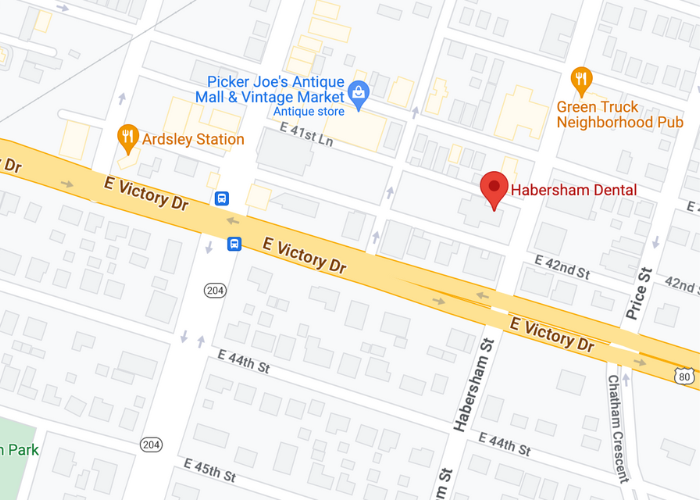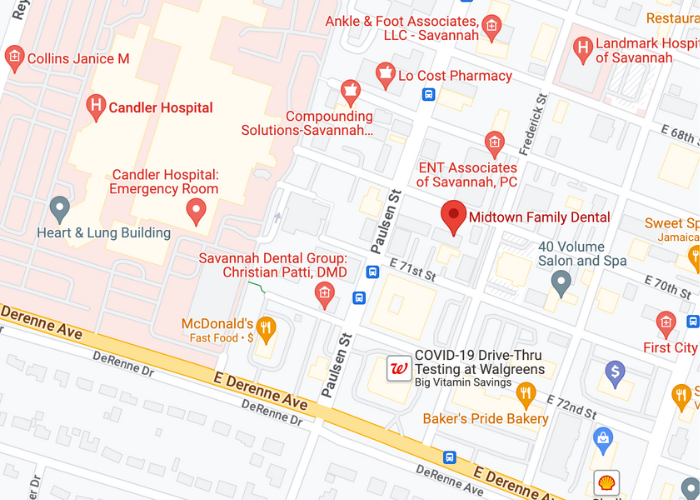Dental Sedation: Making Your Procedure as Comfortable as Possible
Many people have fears and anxiety about visiting the dentist. We get it, dental visits rarely end up being anyone’s favorite thing to do! But, waiting to go to the dentist, or never going, can turn small dental issues into bigger, more complicated problems that are potentially more painful, too. At Habersham Dental, we understand coming to see us can seem intimidating, and we are committed to making your visit as comfortable as possible. Among other things we do to welcome you to our office, we can make most procedures relatively painless, thanks to the power of modern medicine and dental sedation.
Controlling Dental Pain: Local Anesthesia vs. General Anesthesia vs. Sedation
Usually, a local anesthetic is enough to manage your pain. However, for some people, pain isn’t the only concern. Patients who suffer from anxiety may be concerned the discomfort of a procedure will cause elevated anxiety. If that’s the case for you, don’t worry! Sedation can make your visit a breeze.
Dentists use three primary methods to manage patients’ pain and stress during procedures:
- Local anesthesia: numbs the immediate area being worked on
- General anesthesia: makes you unconscious for the duration
- Sedative medication: calms you – dentists can choose different levels of sedative
Local anesthesia is applied with a swab or syringe directly to the skin or muscle in the area the dentist plans to work on. Some sedatives are released into the patient’s bloodstream through a needle or catheter. Unlike general anesthesia, where the patient is entirely unconscious and may need assistance with their breathing and heartbeat, sedative medication can leave the patient in a semi-conscious state. This means the patient can respond to verbal commands and doesn’t need to be watched as closely.
Many sedatives leave the patient with no memory of the procedure, so they don’t have to worry they will have traumatic memories of the procedure. A combination of local anesthesia and sedative medication makes a patient’s experience both painless and more emotionally comfortable. Oral sedatives (by mouth) often simply calm a person’s nerves a bit. These sedatives leave the patient fully conscious but help them relax during the dental procedure. The type of sedation a dentist uses depends on the individual needs of each patient.
Summary
Going to the dentist may not ever be one of your favorite things, but at Finger Lakes Dental we have ways (including sedation) to ensure your dental visit is as comfortable as possible. If you have questions about how we can accommodate you during your visit, or if you have specific questions about any procedure, call the Habersham Dental location nearest you and we’ll be happy to ease your anxiety!
Signs That a Root Canal is Needed
Each year, over 60 million Americans visit the dentist. Many of these visits can be attributed to cavities, which are small holes in your teeth that allow bacteria to get inside. But sometimes, other dental issues occur that require additional treatments. If you experience severe tooth pain, bleeding, or swelling (other than after eating)—these are just a few signs that a root canal is needed. Root canals are considered the best option for saving a damaged tooth when an abscess is present. Here are some signs you might need a root canal.
At Habersham Dental, we offer root canal treatment at all of our offices. See our locations page for address, contact, and office information of each location.
Persistent Pain
Having persistent pain is one way to tell if you need a root canal. The pain might be constant, or it might go away, but it always comes back. You may feel the pain deep in the bone of your tooth, or it might be in your jaw, face or other teeth.
Tooth pain may have other causes, such as gum disease, cavities, or an impacted tooth, but it’s always a good idea to talk with your dentist if you have tooth pain.
Tooth Discoloration
An infection in the pulp of your tooth can cause your tooth to become discolored. Trauma to the tooth or the breakdown of the internal tissue can damage the roots and give the tooth a grayish-black appearance. While there might be other reasons a tooth is discolored, it could be cause for a root canal so talk with your dentist!
Sensitivity to Heat and Cold
When your teeth start to hurt from drinking a hot cup of coffee or drinking ice water, you may need a root canal.
The pain can be just a dull feeling, or it can be a sharp pain that lingers for an extended period of time, even after you’ve finished eating or drinking. If your tooth hurts when you eat or drink something hot or cold, it may be an indication that the blood vessels and nerves in your tooth are infected or damaged.
Swollen Gums
Swollen gums near the painful tooth can be a sign of an issue that requires a root canal. The swelling may come and go. It may be tender when you touch it, or it may not be painful to the touch.
There also might be a pimple-like abscess on your gum, which may ooze pus from the infection of the tooth. This can give you an unpleasant taste in your mouth and make your breath smell bad.
A Chipped or Cracked Tooth
If you’ve chipped or cracked your tooth in an accident, in a contact sport, or by chewing on something hard, bacteria can set in and lead to inflammation and infection. Even if your tooth didn’t crack but you did injure it, the injury can still cause damage to the nerves of the tooth. The nerve can become inflamed and cause pain and sensitivity, which may require root canal treatment.
These are just a few signs that you may need a root canal. If you have any of these symptoms, it’s a good idea to talk with your dentist. The Habersham Dental team can help answer any questions you may have. Contact any of our four locations if you have any questions today.













